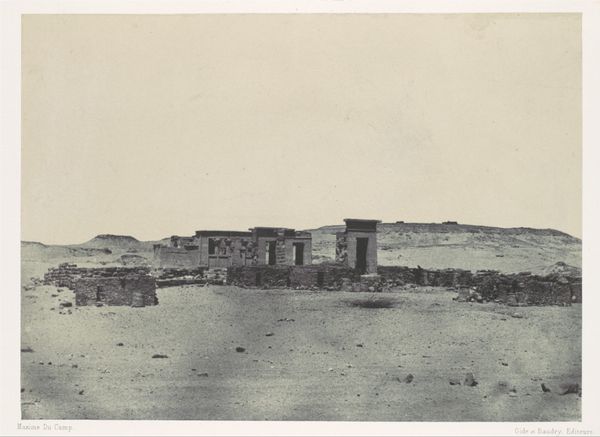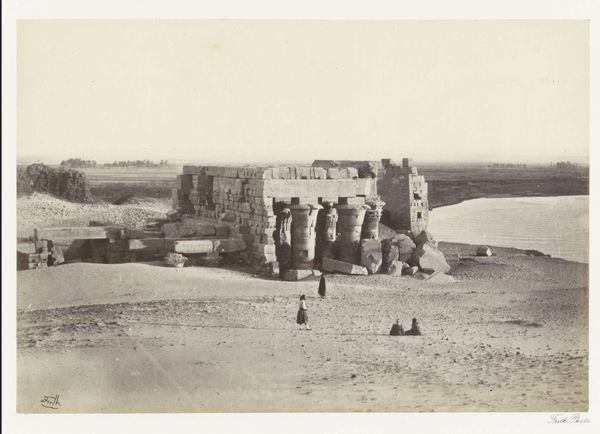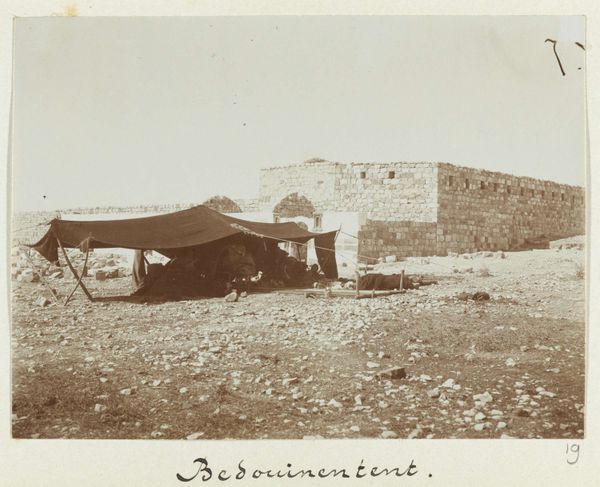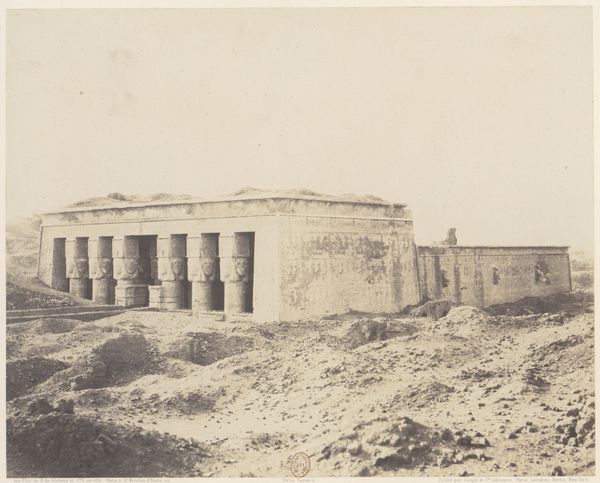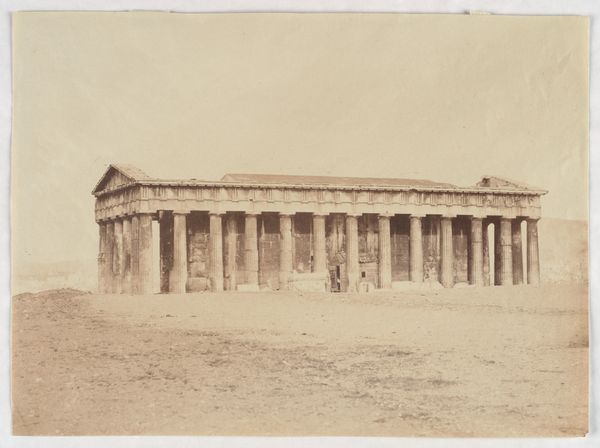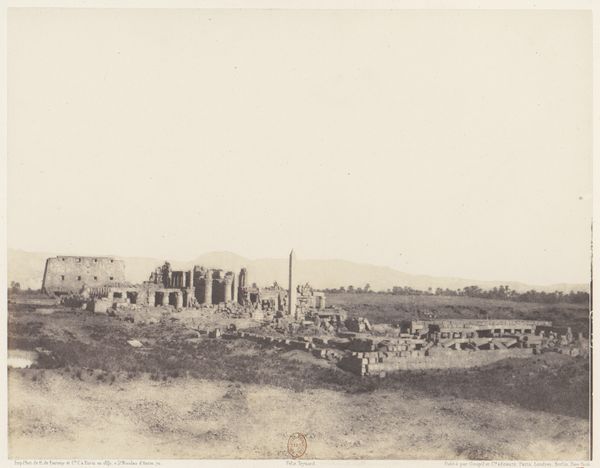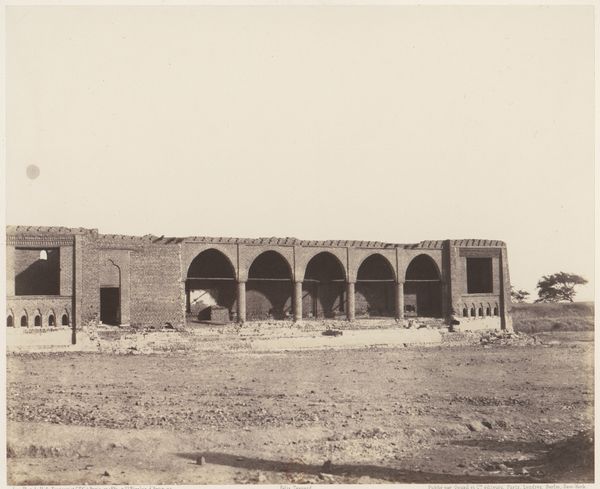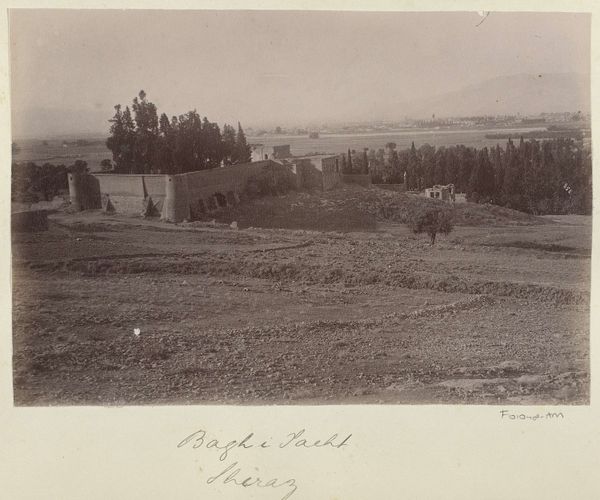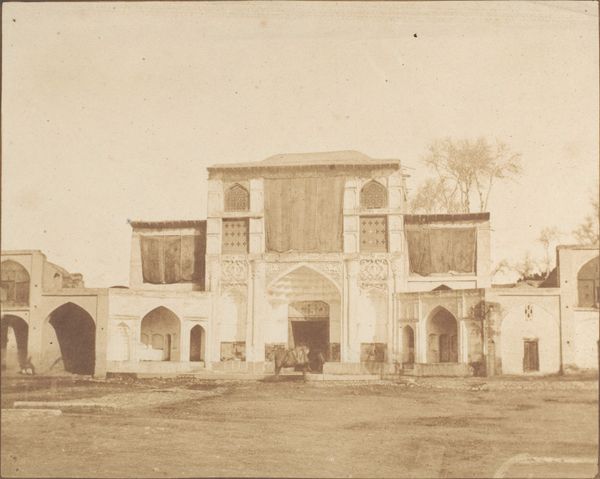
Gezicht op een karavanserai in Perzië met op de voorgrond een man op een vlakte c. 1880 - 1895
0:00
0:00
photography, albumen-print
#
landscape
#
photography
#
historical photography
#
orientalism
#
islamic-art
#
genre-painting
#
albumen-print
Dimensions: height 166 mm, width 230 mm
Copyright: Rijks Museum: Open Domain
This photograph captures a caravanserai in Persia, a roadside inn, through the lens of Antoine Sevruguin. Note the lone figure standing before the structure. This symbol of human presence against a vast, open space resonates deeply within our collective memory. Throughout history, the image of an individual set against monumental architecture appears time and again in varying forms and places. Consider the depictions of wandering scholars in ancient Chinese landscape paintings. These images echo the feeling of solitude, reflection, and the search for meaning amidst the grandeur of the world. Here, too, we encounter the timeless theme of humanity's place within the broader context of its environment. The caravanserai itself, with its arched openings, speaks to the history of trade routes and cultural exchange, and the way those spaces shape and connect societies. Consider the psychological impact of such architecture, which provides both shelter and a stage for human interaction, reflecting our deep-seated need for community and connection. Just as the image of the wanderer persists, the caravanserai continues to evolve, resurfacing in modern forms such as hotels and rest stops, each embodying our ongoing quest for a sense of place and belonging in a world that is always in motion.
Comments
No comments
Be the first to comment and join the conversation on the ultimate creative platform.

